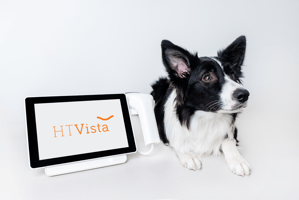Our Response to an Analysis That Missed the Mark In his recent article, after receiving increasing...
An Explanation of Heat Diffusion Imaging (HDI) Technology and Its Applications in Canine Cancer Detection

One of the innovative technologies making strides in this field is Heat Diffusion Imaging (HDI). This article delves into what HDI is, how it works, and its specific applications in the early detection of canine cancer.
What is Heat Diffusion Imaging (HDI)?
Heat Diffusion Imaging is a non-invasive diagnostic technique that leverages heat diffusion to identify abnormalities in tissue. When heat is applied to tissue, it diffuses at different rates depending on the tissue's properties. Cancerous tissues, due to their abnormal cell structures and vascularization, will often diffuse heat differently compared to healthy tissues. HDI captures these variations, creating detailed images that can be analyzed for signs of malignancy.
How Does HDI Work?
The Science Behind HDI
HDI operates on the basic principle of heat transfer. When a controlled heat source is applied to the skin, the heat will spread through the underlying tissues. Infrared sensors then detect the temperature changes on the skin surface over time. By analyzing these temperature changes, HDI can create a thermal map of the tissue, highlighting areas where heat diffusion is abnormal.
Equipment and Process
-
Heat Source: A safe, controlled heat source is applied to the area of interest.
-
Infrared Sensors: These sensors detect the heat emitted from the skin surface.
-
Data Acquisition: The sensors capture data on how the heat diffuses through the tissue.
-
Image Processing: Advanced algorithms process the data to generate thermal images.
-
Analysis: Veterinary professionals analyze these images to detect abnormalities that may indicate cancer.
Application of HDI in Canine Cancer Detection
Early Screening
One of the most significant applications of HDI is in the early screening of canine cancer. Traditional methods like biopsies can be invasive and stressful for pets. HDI offers a non-invasive alternative, allowing for earlier detection without discomfort. By identifying abnormalities at an early stage, HDI can significantly improve the chances of successful treatment.
Monitoring Treatment Progress
HDI is also useful for monitoring the progress of cancer treatment. By regularly imaging the affected area, veterinarians can observe changes in heat diffusion patterns, which may indicate how well the treatment is working. This allows for timely adjustments to treatment plans, optimizing outcomes for canine patients.
Post-Treatment Surveillance
After successful treatment, HDI can be used for ongoing surveillance to detect any recurrence of cancer. Regular screenings can help catch any signs of cancer returning at the earliest possible stage, ensuring prompt intervention.
HT Vista: A Leading Solution Utilizing HDI
HT Vista is a pioneering screening solution that combines HDI with artificial intelligence (AI) to enhance the detection of canine cancer. The integration of AI allows for more accurate analysis of thermal images, reducing the likelihood of false positives and negatives.
By leveraging both HDI and AI, HT Vista provides a powerful tool for the early detection and management of canine cancer.
Advantages of HDI in Canine Cancer Detection
Non-Invasive and Stress-Free
One of the most significant advantages of HDI is that it is non-invasive. Unlike biopsies or other surgical procedures, HDI does not require any incisions or anesthesia, making it a stress-free option for pets.
Early Detection
Early detection is crucial for the successful treatment of cancer. HDI can identify abnormalities at an early stage, often before they are detectable through other means. This can lead to earlier interventions and better outcomes.
Cost-Effective
HDI is generally more cost-effective than other advanced diagnostic tools. It reduces the need for multiple tests and invasive procedures, lowering the overall cost of cancer detection and treatment.
Real-Time Results
HDI provides real-time results, allowing for immediate analysis and decision-making. This is particularly beneficial in urgent cases where time is of the essence.
Conclusion
Heat Diffusion Imaging (HDI) represents a significant advancement in the field of canine cancer detection. Its non-invasive nature, combined with the ability to provide early and accurate detection, makes it an invaluable tool for veterinarians and pet owners alike. HT Vista, with its integration of HDI and AI, exemplifies the potential of this technology to revolutionize the way we approach cancer screening in dogs.

.png?height=200&name=Copy%20of%207%202%20(2).png)
